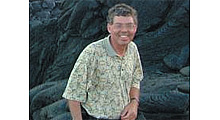FCC Proposes New In-Flight Communications Rules

Doug Lung On Friday Dec. 13 the FCC released a Notice of Proposed Rulemaking (FCC 13-157) regarding “Expanding Access to Mobile Wireless Services Onboard Aircraft.” As I reported two weeks ago, the use of phones on planes is not as simple as some news stories might lead you to believe. For example, an air carrier allowing use of mobile devices on its planes would have to raise the noise floor on the planes to prevent devices from contacting terrestrial sites.
The NPRM points out that the FCC's restrictions on mobile devices on planes was not due to interference to aircraft systems (that's the FAA's domain), but the potential for mobile devices on planes to cause widespread interference to wireless sites on the ground.
The NPRM says: “Even though the airborne wireless signal becomes weaker with increasing height above the ground, unlike the terrestrial case, it is not attenuated by terrain and obstacles, and it is not affected by the curvature of the earth. Thus, the signal from an airborne handset with an unobstructed line of sight may remain sufficiently strong as the device attempts to access multiple terrestrial sites, causing harmful interference or other undesirable effects to terrestrial systems.”
The Technical Requirements part of the NPRM states: “Our review of existing operations reveals that, for an Airborne Access System to effectively manage emissions from mobile broadband-capable devices, certain technical restrictions must be enforced. Specifically, three types of devices transmitting aboard the aircraft must be limited in power to prevent harmful interference to terrestrial networks: (1) the mobile device; (2) the picocell; and (3) the NCU [Network Control Unit].”
One of the purposes of the NCU is to raise the noise floor inside the plane high enough to prevent devices onboard the aircraft from accessing the terrestrial CMRS network. The FCC used research by CEPT in Europe as a foundation for the technical requirements and is seeking comment on this, as well as on the potential implications of use of different spectrum bands in the United States.
The NPRM says: “We ask that commenters address: (1) whether Airborne Access Systems can effectively prevent harmful interference into terrestrial wireless networks; (2) whether alternative or supplemental technological solutions would be more effective; (3) whether the proposed power levels are appropriate; and (4) what additional technical specifications may be needed to ensure that these systems and airborne mobile broadband devices do not interfere with existing terrestrial networks. We also request comment on any other technical restrictions or requirements that may be necessary to prevent harmful interference to terrestrial CMRS networks or to ensure reliable communications for mobile communications services on aircraft, or whether an alternative technical solution may be more appropriate in the domestic marketplace.”
The FCC proposes covering Airborne Commercial Mobile through aircraft station licenses issued under Part 87 of the FCC rules, although the FCC welcomed comments on alternative methods. The NPRM notes, “Under any airborne authorization scheme, Airborne Access Systems would be required to manage in-flight mobile use. Mobile communications services controlled by authorized Airborne Access Systems would be permitted across all commercial mobile spectrum bands at altitudes above 3,048 meters (10,000 feet). These authorizations would cover only in-cabin operations. Moreover, any authorization method would require an agreement with separately authorized satellite or air-to-ground backhaul links to transmit mobile data from the aircraft to terrestrial networks.”
Regulating use of mobile wireless devices onboard aircraft will be complicated – you can find the details in the 51 page Notice of Proposed Rulemaking (FCC 13-157) regarding “Expanding Access to Mobile Wireless Services Onboard Aircraft.”
For additional technical details, see the CEPT Report 48 – Report from CEPT to the European Commission in response to the Second Mandate to CEPT on mobile communication services on board aircraft (MCA) referred to in the NPRM.
Also see my previous article A Closer Look at the FCC’s Airborne Cell Phone NPRM.
The professional video industry's #1 source for news, trends and product and tech information. Sign up below.

Doug Lung is one of America's foremost authorities on broadcast RF technology. As vice president of Broadcast Technology for NBCUniversal Local, H. Douglas Lung leads NBC and Telemundo-owned stations’ RF and transmission affairs, including microwave, radars, satellite uplinks, and FCC technical filings. Beginning his career in 1976 at KSCI in Los Angeles, Lung has nearly 50 years of experience in broadcast television engineering. Beginning in 1985, he led the engineering department for what was to become the Telemundo network and station group, assisting in the design, construction and installation of the company’s broadcast and cable facilities. Other projects include work on the launch of Hawaii’s first UHF TV station, the rollout and testing of the ATSC mobile-handheld standard, and software development related to the incentive auction TV spectrum repack. A longtime columnist for TV Technology, Doug is also a regular contributor to IEEE Broadcast Technology. He is the recipient of the 2023 NAB Television Engineering Award. He also received a Tech Leadership Award from TV Tech publisher Future plc in 2021 and is a member of the IEEE Broadcast Technology Society and the Society of Broadcast Engineers.
